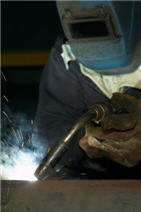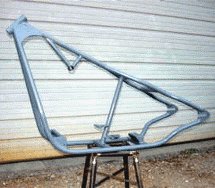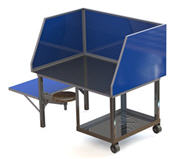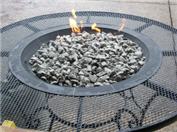Common and Uncommon Metals You Can MIG Weld!

So you have a MIG welder and you want to know the metals you can mig weld with it. Or, maybe you want to weld an uncommon metal for some projects like nickel or titanium and you don't want to spend the money for an expensive TIG welder and it's components. I understand that.
However, there are many types of metals you can weld in general including uncommon metals like titanium. But each welding process is only good for certain types of metals.
If you want to weld a wide range of metals well you should understand that the most versatile process is the TIG welding.
Lets cover the common metals you can mig weld starting with steel.
MIG Welding Carbon Steel?
Most of your welding will probably be on carbon steel. Mild steel is usually what most hobbyist welders and fabricators use.
Mild steel is a low carbon steel which means that the main alloying ingredient is carbon, and it's only about .05% - .25% carbon (which is added to iron to make the low carbon steel). There are also medium and high carbon steels.
When MIG welding mild steel you can use the short arc metal transfer mode or the spray metal arc transfer method. If you use the spray arc method consider using a gas mixture of Argon, and 5% Oxygen. It should provide a better arc.
The most common gas mixture is 75/25 (Argon and C02) for short arc transfer. It will give you good penetration, it's smooth, and you'll have very little spatter. There are other mixtures to consider, and what you choose depends on what you are trying to accomplish. For example you can also use pure C02.
When MIG welding thin material which is .035" - 1/8" you do not need to prepare the edges, but you should usually have a root opening (but not always).
If you are welding anything thicker than 1/8", you need to prepare the edges. And if you welding thick metal which is perhaps .25" or more you'll need to use more advanced beveling to get the penetration you need - a single or double V groove.
Can You MIG Weld Aluminum?
The recommended shielding gas mixture for mig welding thicker aluminum (1" - 2") is usually 90% argon and 10% helium. Helium is allows for heat to penetrate the metal providing for better fusion of the weld. The argon helps with cleaning the oxides from the aluminum which are always present on aluminum.
Also, spray arc metal transfer is preferred for thicker aluminum because you'll melt both the base metal and the mig wire with this method.
For thinner aluminum mig welding you will want to use short arc metal transfer. A short arc is necessary because a spay arc transfer is hotter, and you don't want too much heat on aluminum. Short arc is also preferred for out of position welding of aluminum for this reason as well.
If you are welding aluminum that is up to 1" thick, a gas mixture of pure argon (100% argon) is recommended so that you don't get too much heat input which will cause problems in your weld.
Can You MIG Weld Stainless Steel?
Welding stainless steel is a little bit different than welding mild steel in that you will be welding with a gas mixture of around 1-2% Oxygen along with the argon.
You will also be welding with the Direct Current Reverse Polarity (DCRP) setting on your MIG welder.
A spray arc metal transfer method is a common way to weld stainless steel. But if you are welding up to 1/16" you should probably use a backup strip, and a copper strip is recommended.
However, if you are going to be welding in the overhead welding position or the vertical welding position, and it is thin stainless steel you should use the short arc metal transfer.
Can You MIG Weld Chromoly?
Chromoly: The most commonly used chromoly is 4130. There are others like 4140, or 4340. And welding chromoly with the GMAW process is possible. Again, TIG (GTAW) is the best for chromoly. Back in the day, like during World War II, they used Oxy Acetylene.
But MIG
welding 4130 chromoly can be done, however it's a little risky. MIG is
not as clean as TIG, and since chromoly is a strong steel it is more
suceptible to your welds and the metal being damage as a result of
contamination. That is why TIG is better because it's cleaner and you
are don't have as much heat input. MIG produces more heat than TIG.
Some
way that you should pre-heat the material prior to MIG welding, which
seems like a good idea due to the fact that MIG welding is a hotter
process. So preheating will prepare the metal better for the MIG
process.
I tracked down some numbers on preheating chromoly (check your welder manual and its recommendations): Preheat 100° Farenheight for every .1% of carbon. So if it there is .3% carbon in 4130 then you should preheat it to 300°.
What About MIG Welding Titanium, and Copper?
Titanium: It's possible to MIG weld titanium but it's not easy and it's very dangerous. It can catch on fire! You should go with a TIG welding process for quality results. And even with TIG welding you need to take special care in preparation. Do your homework on Titanium.
Copper: You should not MIG weld copper. TIG is the way to go. You will probably be needing quite a few amps to TIG weld copper. In addition you will want to use the same filler metal as the base metal you are welding. Consult your TIG welder recommendations.
Copyright WcWelding.com All Rights Reserved.
Welding Plans:
New! Welding Table
New! Log Splitter
Top Projects:






